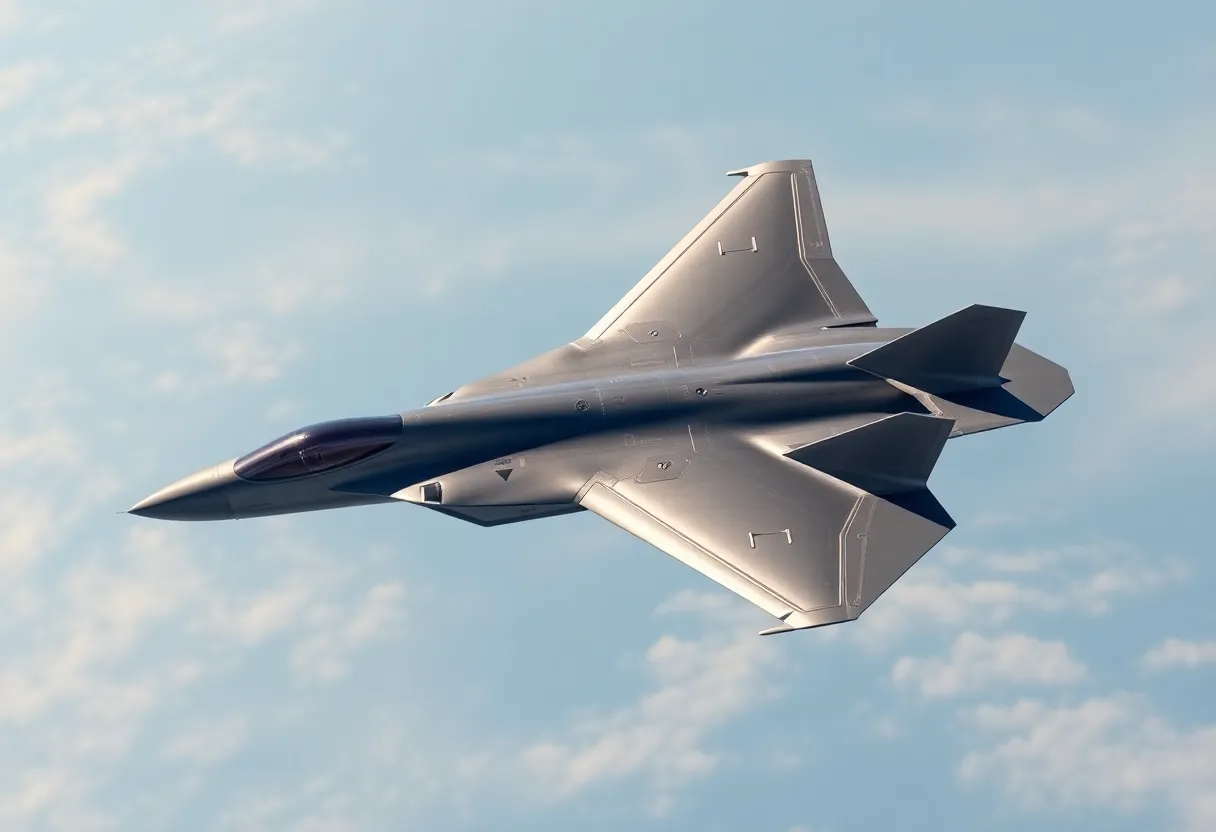
The competition for air superiority never rests, and the U.S. Air Force’s Next Generation Air Dominance (NGAD) program proves how quickly the ground can change. With the recent contract award of the NGAD to Boeing to build the F-47—the sixth-generation fighter—the Air Force is doubling down on remaining ahead of increasingly sophisticated adversaries.

The story of the NGAD begins with the Pentagon’s realization that older planes, such as the F-22 Raptor, which are formidable, are no longer sufficient to counter the threats posed by near-peer rivals, particularly China. The origins of the program start with the Defense Advanced Research Projects Agency’s Air Dominance Initiative in 2014, which shifted to the Aerospace Innovation Initiative (AII) and the Air Superiority 2030 study. These initiatives converged on the idea that one “Gen6” fighter would not be enough; instead, what was needed was a system-of-systems solution that could penetrate and survive in contested environments, include unmanned systems, and quickly adapt to new technologies.

The NGAD program is not so much about developing a new aircraft. It’s about redefining air supremacy in the era of distributed, networked warfare. The centerpiece is the F-47, a sixth-generation fighter to be constructed as part of a family of systems. It would include loyal wingman-type Collaborative Combat Aircraft (CCA), sensors, electronic warfare suites, and hardened command-and-control networks. The Air Force envisions purchasing at least 200 F-47s and 1,000 CCAs, leveraging the synergy between manned and unmanned systems to maximize lethality and survivability.

Technologically, NGAD pushes the boundaries with advanced stealth, sensor fusion, and long-range strike capabilities. The propulsion also takes a major leap forward, with the Next Generation Adaptive Propulsion (NGAP) program at the forefront of variable-cycle engines like Pratt & Whitney’s XA103 and GE’s XA100. These engines foresee greater efficiency at both subsonic and supersonic speeds, better cooling, and greater electrical power output—necessary for powering next-generation avionics and directed energy systems. Impacts from the Adaptive Engine Transition Program (AETP) are being translated directly into NGAP, so the F-47 will have the range and performance needed to fly in the Pacific theater.

The Boeing contract award is a milestone. After a strategic pause for reconsideration of costs and requirements, the Air Force selected Boeing over Lockheed Martin due to the need for a broader industrial base and its willingness not to have a monopoly in fighter production. Under President Donald J. Trump, “I’m glad to report that, on my instruction, the United States Air Force is going ahead with the world’s initial sixth-generation fighter plane. There is nothing else in the world even comparable to it, and it will be the F-47.” This followed hundreds of hours of flight testing with DARPA X-plane demonstrators built by Boeing and Lockheed Martin, which quietly checked out key technologies and operational concepts.

The F-47 is designed with modularity and flexibility at its core, offering flexibility to integrate new technologies and upgrade rapidly. Its open architecture ensures that future upgrades—in sensors, in weapons, or in software—can be added without the cost and time-consuming overhauls that have beset previous programs like the F-22 and F-35. The government-owned Agile Mission Suite, upon partitioned avionics systems used on the B-21 bomber, will enable quick response to emerging threats and missions.

Collaborative Combat Aircraft are a central part of the NGAD vision. CCAs such as Anduril’s YFQ-44A and General Atomics’ YFQ-42A are presently in ground testing and will soon be airborne. These unmanned aircraft will be flown alongside the F-47, carrying sensors, electronic warfare equipment, and additional ordnance. The Air Force’s human-machine teaming approach is evolving beyond the “loyal wingman” to an increasingly integrated approach where CCAs will have the ability to execute complex missions autonomously or in conjunction with manned platforms.

Despite the technological promise, NGAD will encounter significant budgetary and industrial challenges. The unit cost of the F-47 is anticipated to be between $200 million and $300 million, a substantial investment relative to previous fighters. The Air Force requested $2.7 billion for NGAD in its FY25 budget, planning to allocate nearly $20 billion within five years. Balancing these with other priorities—B-21 Raider bomber, Sentinel ICBM upgrade, and F-35 upgradation—will involve some tough decisions. The Fiscal Responsibility Act and other Congressional pressures make it even more difficult. Boeing’s victory is not without risk. The company has struggled with delays and quality issues on recent Air Force contracts, including the T-7 trainer and KC-46A tanker. The imperative to deliver the F-47 on time and within budget is huge, as China continues to roll out new stealth fighter prototypes and develops its air defense infrastructure. The Air Force’s plan to phase out older F-22s and move assets to NGAD represents the imperative of inducting a replacement that can maintain air superiority in the Indo-Pacific.

Export implications add another level of complexity. While the F-22 was blocked from international sales, speculation is that the F-47 will be sold in diminished capability models to allies, but the idea is dubious because the platform’s advanced technology and geopolitical worth render it improbable.

Lastly, the NGAD program is a wager on the future of air warfare. By adopting a modular, iterative development approach and merging manned and unmanned platforms, the Air Force believes it can deliver capabilities to outpace adversaries and adapt to challenging threats. The F-47 is not just a new fighter—it’s the centerpiece of a new American airpower generation, one that will set the balance of power for decades to come.
